Dividend stocks make excellent additions to any investment portfolio, and there are several straightforward reasons for this.
Dividends, which are essentially cash payments distributed by a company to its shareholders, represent a share of the company’s profits. Consequently, firms that pay out dividends are usually ones that generate significant profits. Moreover, top-performing dividend stocks often provide these payments on a regular basis, such as quarterly, indicating a pattern of steady and ongoing success.
Despite this, selecting the best dividend stocks is no easy task. Some companies offer only a modest payday now, but have the prospect of a much bigger payout later as they experience earnings growth and then share that success with stockholders. Others pay dividends that are huge now but are infrequent or unsustainable.
Not all dividend stocks are created equal. So income investors interested in this asset class need to decide how to balance the need for “yield” and the need for stability and consistency in their holdings.
Today, we’ll look at what we believe are nine of the top dividend picks for beginners in 2024 (we even provide three extra picks near the end that pay more frequent dividends). But we’ll also help new income investors acclimate to the space by explaining some of the basics, which will help you identify new dividend opportunities in the future.
Disclaimer: This article does not constitute individualized investment advice. These stocks appear for your consideration and not as personalized investment recommendations. Act at your own discretion.
Editor’s Note: Tabular data presented in this article is up-to-date as of Oct. 14, 2024.
Table of Contents
What Is Dividend Yield?
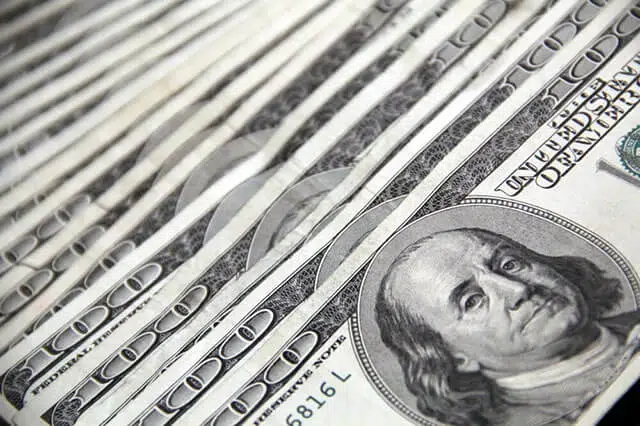
Perhaps the most important metric in this universe is known as dividend yield. This is a simple financial ratio that tells you the percentage of a company’s share price that is paid out across a year’s worth of dividend distributions.
Expressed as a mathematical equation, it’s simply:
Dividend yield = annual dividend / price x 100
The idea here is to normalize dividend payments regardless of stock price, different quarterly payments, even different payment frequencies (like monthly or annually). For instance, each of the following fictional stocks all have a dividend yield of 2.5%:
— Alpha Corp. currently trades for $40 a share. It pays a 25-cent quarterly dividend, for $1.00 per year in full. ($1 / $40 x 100 = 2.5%)
— Beta Inc. pays $1 in the first quarter, $2 in Q2, $3 in Q3 and $4 in Q4. That’s $10 in dividends for the full year. It trades for $400 a share. ($10 / $400 x 100 = 2.5%)
— Gamma Ltd. pays $2.50 just once per year. It trades for $100 a share. ($2.50 / $100 x 100 = 2.5%)
The idea is to focus on the percent of your initial investment you get back, and help you compare apples to apples.
Falling Prices or Rapid Dividend Payout Growth?

Taking this math a step further, you learn that a company can suddenly feature a very high dividend yield through one of two very different ways: the share price falling very quickly, or the dividend growing very rapidly.
Alpha Corp., which trades for $40 per share, pays a 25-cent quarterly dividend that yields 2.5%. In a month, it yields 5.0%. Here are two ways that could have happened.
— Alpha Corp. doubled its dividend to 50 cents per share, for a full $2 per share across the year. The share price stays the same. ($2 / $40 x 100 = 5.0%)
— Alpha Corp. kept its dividend the same, but its share price plunged in half to $20 per share. ($1 / $20 x 100 = 5.0%)
Clearly, that 5% yield appears to be much safer and reliable in one scenario than the other.
How Does Dividend Growth Work?

Of course, yield is normally a function of what we know now—not how a business might change in the future. Many companies exhibit dividend growth over time.
There’s no universal rule about how companies might raise or reduce their payments, but generally dividend stocks tie these profit sharing plans to earnings growth.
In other words, if a company is making more profits, then they have more cash to spread around to shareholders. And if they hit a serious snag, there’s a chance dividends could be cut or eliminated to shore up finances.
Like Young and the Invested’s content? Be sure to follow us.
What Is a Payout Ratio?
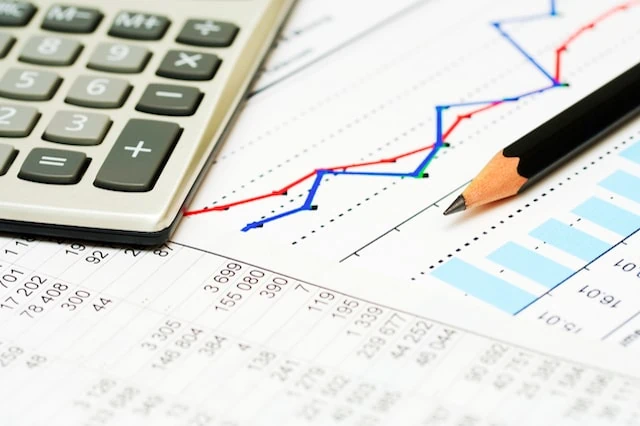
As with dividend yield, it’s important to normalize the dividend payout ratio for a stock. This is simply the percentage of a company’s earnings per share that is being distributed via dividends. It’s calculated as:
Payout ratio = dividends per share / earnings per share x 100
As an example, a stock that makes $100 million in profits and has 10 million shares of public stock has $10 in earnings per share. And if that company pays $5 annually in dividends, it has a payout ratio of 50% ($5 / $10 x 100 = 50%).
Related: The 7 Best Vanguard ETFs for 2024 [Build a Low-Cost Portfolio]
What Is Yield on Cost?

When you look up a stock’s information, the dividend yield listed is based on the most recent dividend and the current stock price.
That yield is often actually different than the one current shareholders enjoy. That yield is called “yield on cost,” which is the payout based on what you paid, at the moment you invested.
Let’s say you buy a stock at $100, and it pays $1 per share. It yields 1.0% when you buy it ($1 / $100 x 100 = 1.0%).
In a year, that stock has doubled to $200 per share, and it also doubled its dividend to $2 per share. If you look up its information, its dividend is still 1.0% ($2 / $200 x 100 = 1.0%).
That’s not your yield on cost, however. You’re still receiving that higher dividend of $2 per share. But your cost basis is still the original $100 you bought the share at. So now, your yield on cost has doubled, to 2.0% ($2 / $100 * 100 = 2.0%)!
Related: 5 Best Fidelity Retirement Funds [Low-Cost + Long-Term]
Beginners’ Best Stocks to Buy for Receiving Dividends

If you think all this math is tedious, you’re not alone! But remember: Not all dividend stocks look alike. They come in all shapes and sizes, and metrics like dividend yield and payout ratio help investors make more informed decisions.
As with many things on Wall Street, it’s misleading to look at just a single number in a vacuum. Whether you’re investigating share price or dividend payments or earnings per share, these metrics only matter when you can compare them fairly with another company’s performance.
Now that you have a basic understanding of how companies pay dividends and why measures like dividend yield are important, let’s move on to some of the best options for income investors right now.
Related: Best Vanguard Retirement Funds for a 401(k) Plan
1. Coca-Cola (KO)

— Market value: $299.8 billion
— Dividend yield: 2.8%
— Sector: Consumer staples
Consumer staples stocks—companies that make goods that are basic necessities—are some of the best dividend stocks because they aren’t prone to the ups and downs of discretionary companies. When times get tough, households spend less on vacations or designer jeans, but they keep going to the grocery store every week.
And when it comes to consumer stocks, Coca-Cola (KO) is a powerhouse that’s hard to top.
The Atlanta-based beverage company has a global scale with more than 130 years of operating history, and operations in 200 nations around the world. While it’s true that sugary soft drinks might not be a growth business in an age of healthy eating, it’s important to understand that Coke products have strong baseline demand—and beside, this multibillion-dollar powerhouse also owns brands including Vitaminwater, Fuze teas, Powerade energy drinks, Minute Maid juices, and many more.
Related: 7 Best Fidelity ETFs for 2024 [Invest Tactically]
It’s also worth noting that Coca-Cola has a great deal of institutional (large-investor) demand. Berkshire Hathaway (BRK.B)—the holding company founded by the world’s most famous investor, Warren Buffett—is KO’s largest shareholder. Berkshire holds more than 9% of the company, providing a strong foundation for share prices as well as a mandate for generous and consistent dividends.
That shows in the track record of KO stock: In 2024, the company approved its 62nd consecutive annual dividend increase. That makes it not only a Dividend Aristocrat (a select group of stocks that have paid dividends without interruption for at least a quarter-century), but a Dividend King (companies that have done so for 50-plus years).
KO’s payout ratio of 75% is high but not dangerously so; it means dividend increases will be modest but should remain persistent.
Related: 7 High-Quality, High-Yield Dividend Stocks
2. Consolidated Edison (ED)

— Market value: $35.4 billion
— Dividend yield: 3.2%
— Sector: Utilities
Utility stocks are another sector to consider when looking for the top dividend stocks. Electricity and water are just as important as groceries and cleaning products, and the expensive infrastructure and highly regulated nature of publicly traded utilities means competition is hard to come by. In truth, most U.S. electricity companies are virtual regional monopolies with incredibly consistent demand for their products.
That’s what makes a stock like Consolidated Edison (ED) so attractive to income investors.
Related: The 5 Best T. Rowe Price Funds to Buy and Hold
“ConEd” and its subsidiaries distribute electricity to about 3.9 million customers in New York City, as well as several other counties in New York State and New Jersey; and natural gas to 1.2 million more. This dense area of the U.S. is certainly not going to be less reliant on energy anytime soon, translating into a nearly certain stream of revenue for this dividend stock.
This consistency has allowed ConEd, another Dividend Aristocrat, to provide 50 years of consecutive dividend increases to its stockholders. Like with Coca-Cola, the payout ratio is on the high side. However, it’s still manageable at less than two-thirds of next year’s earnings, and Edison features extremely stable earnings that can slowly but persistently grow over time—allowing its dividend to expand the same way.
Related: 10 Best Stock Picking Services, Subscriptions, Advisors & Sites
3. Altria Group

— Market cap: $85.0 billion
— Dividend yield: 8.2%
— Sector: Consumer staples
Altria Group (MO) is the iconic tobacco brand behind Marlboro cigarettes, Black & Mild pipe and cigar products, and smokeless tobacco like Copenhagen and Skoal.
It might not be the most innovative company. And a lot of investors are immediately repelled by it because of the goods it sells. And truth be told, its share price is about as ho-hum as you might expect, given that there are simply more dynamic investments to be made in other sectors.
But make no mistake: Altria isn’t going anywhere.
Related: 10 Best Vanguard Funds for the Everyday Investor
Altria dominates the U.S. market, with one of the most consistently profitable operations on Wall Street. Thanks to this reliability, MO has logged 54 consecutive years of dividend increases, demonstrating a long-term commitment to its shareholders.
Looking forward, the legacy business of Altria has newer offerings that are contributing to its future operations, such as NJOY e-cigarettes and Helix oral nicotine pouches. And while it’s not as prominent as fashionable growth stocks these days, this “sin stock” has loyal customers and a long, long history of generating a consistent and reliable yield.
And with a dividend yield that is nearly six times the S&P 500 Index as a whole, you’ll be getting a generous payday that is unmatched by nearly any other stock on Wall Street.
Related: 7 Best High-Dividend ETFs for Income-Minded Investors
4. Equinix (EQIX)
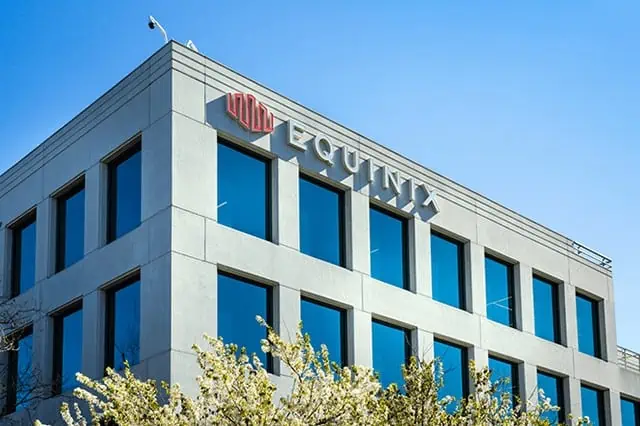
— Market value: $82.8 billion
— Dividend yield: 2.0%
— Sector: Real estate
Generally speaking, tech stocks don’t make for good dividend investments. Most startups need to invest aggressively in new staff or new products rather than share profits with investors, and even established tech companies like Amazon.com (AMZN) tend to prioritize growth over dividends.
What makes Equinix (EQIX) such an interesting dividend stock, however, is that it’s a kind of hybrid between a traditional income investment and a tech operation.
Like Young and the Invested’s content? Be sure to follow us.
EQIX is what’s referred to as a real estate investment trust, or REIT—a special class of company that involves property owners and operators. These companies receive special tax considerations, and in return, they must distribute at least 90% of their earnings back to shareholders as dividends.
This particular real estate company owns data center real estate. And it has a lot of reliability, charging regular rent to deep-pocketed tenants who want to buy server space in Equinix’s digital infrastructure empire. After all, everyone wants their data to live on “the cloud,” but the physical hardware to host that data has to live somewhere—and that somewhere is on Equinix’s properties.
EQIX boasts more than 456,000 interconnections to more than 10,000 customers to its data centers. It’s the leader in its field with consistent revenue growth—and most importantly for dividend investors, a 25% bump in payouts in November. That’s income investors can rely on, and a sign that future dividend growth is in the cards if the company continues to expand revenue and profits down the road.
Related: The 24 Best ETFs to Buy for a Prosperous 2024
5. Johnson & Johnson (JNJ)

— Market value: $388.7 billion
— Dividend yield: 3.1%
— Sector: Health care
There’s an old saying that the best dividend stocks are “widow and orphan” investments, because they are the kind of assets you buy and hold forever—or at least until you die and pass them on as inheritance.
Johnson & Johnson (JNJ) is a prime example. It is among the 25 largest companies on Wall Street, with a massive brand and more than 135 years of operations. JNJ is also one of the most credit-worthy companies in the world, ranking as one of just two U.S. companies with a top AAA rating for its corporate debt. Microsoft (MSFT) is the other, if you’re curious.
Related: 10 Best Dividend Stocks to Buy [Steady Eddies]
From a dividend perspective, the health care giant has raised its payouts for 61 years running—one of the longest track records on Wall Street, making it an Aristocrat—but still has a payout ratio of less than 50%, hinting there’s ample headroom for future increases, too.
In the second half of 2023, JNJ executed a spinoff of its dominant consumer health business, Kenvue (KVUE), that includes Tylenol and Band-Aid products. But while that modestly reduced the overall footprint of the company, it also sharpened its focus on high-margin drugs and medical devices to ensure future success. This stock is deeply embedded in the health care system and a top dividend stock that income investors can rely on through any market environment.
Related: The 13 Best Mutual Funds You Can Buy
6. JPMorgan Chase (JPM)
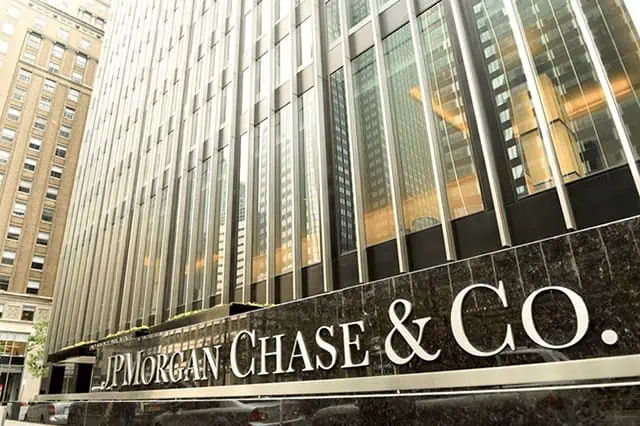
— Market value: $632.5 billion
— Dividend yield: 2.3%
— Sector: Financial
Keeping with the theme of entrenched giants that are going nowhere, it’s hard to imagine a time when mega-bank JPMorgan Chase (JPM) hasn’t dominated the financial sector. And thanks to massive operations and steady profits, it has long been a standby of dividend stock investors as a result.
Sure, the financial crisis of 2008 shook things up—and in fact, it even resulted in a short-lived dividend rollback for JPM. However, those dividend cuts were mandated by the Federal Reserve. And it’s worth noting that JPMorgan was the first major financial organization in the U.S. to eclipse its pre-crisis dividend levels. Specifically, in 2008, JPM was paying $1.52 annually before the downturn, but by the end of 2014, it had paid $1.56 per share.
Related: The 7 Best Dividend ETFs [Get Income + Diversify]
After March and September 2024 increases, it now doles out an impressive $1.25 per share quarterly, or $5.00 annually—proof that CEO Jamie Dimon has earned his keep through profitable acquisitions of troubled peers like Bear Stearns and Washington Mutual during the crisis, and by a steady hand on the helm ever since.
This mega-bank has roots dating back to 1799, and is currently the largest U.S. bank by assets. If you’re a long-term income investor, JPM is the kind of financial stock you can believe in for many years to come.
Related: The 7 Best Vanguard Index Funds for Beginners
7. ASE Technology

— Market cap: $21.9 billion
— Dividend yield: 3.2%
— Sector: Technology
Technology stocks are, as a group, fairly unimpressive in the dividend department. Many of the largest and most dynamic companies out here—say, Amazon.com (AMZN) or Alphabet (GOOGL), among others—don’t pay a penny in dividends. And the ones that do are usually well below the average payout you’ll find in other sectors.
That’s what makes ASE Technology (ASX) such an interesting dividend investment.
Related: Best Vanguard Retirement Funds for a 401(k) Plan
Though a semiconductor stock, ASE is not a direct chipmaker and instead operates as a leading provider of packaging and testing for other firms in the sector. That provides a steady flow of cash that is not reliant on the ups and downs of the spending cycle.
The good news is that, lately, ASE hasn’t just been treading water—it has been on a significant uptrend. For both fiscal 2024 and fiscal 2025, experts are projecting double-digit revenue growth for ASE Technology, with profits expanding even faster.
That should help ASX’s generous dividend continue to expand as it has over the past few years.
Related: 7 Best Schwab ETFs to Buy [Build Your Core for Cheap]
8. Prudential Financial (PRU)
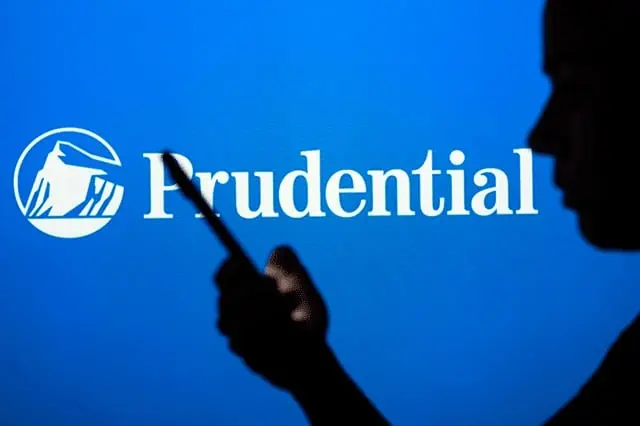
— Market value: $44.2 billion
— Dividend yield: 4.2%
— Sector: Financial
Understanding that some beginners investing in dividend stocks might not see big banks as attractive as they once were in decades past, Prudential Financial (PRU) offers exposure to the financial sector in a different and more subdued way.
While Prudential does offer wealth management services, its core business comes from rather boring business lines such as life insurance and benefit administration for corporations. Unlike a big investment bank, there’s not really a lot of potential for windfall profits here. It’s just the mundane business of collecting premiums or helping small businesses manage their 401(k) plans.
That said, these admittedly boring business lines provide a lot of stability to operations. Prudential has steadily ratcheted up its paydays lately as a result, with dividends soaring from $2.32 annually in 2014 to $5.20 presently. That kind of growth over the past decade or so should make anyone pay attention, even if the company isn’t as dynamic as other financial firms.
The icing on the cake? Even with one of the highest yields on this list, Prudential has a dividend payout ratio of less than 40% of its projected profits for 2024. That means those big-time increases in payouts aren’t just sustainable, but also have room for continued dividend growth in the years ahead.
Related: How to Get Free Stocks for Signing Up: 7 Apps w/Free Shares
9. Verizon Communications (VZ)

— Market value: $181.0 billion
— Dividend yield: 6.3%
— Sector: Communication services
Another top dividend stock that has obvious staying power is Verizon Communications (VZ).
It is the No. 2 wireless carrier in America right now, behind AT&T (T) but ahead of T-Mobile US (TMUS). And in an era where mobile connectivity is a must-have for consumers and businesses alike, there’s little chance of any widespread rollback in customers that would affect this dominant position.
Like Young and the Invested’s content? Be sure to follow us.
What’s more, rather than chase subscriber market share in what has historically been a pretty entrenched marketplace, Verizon has instead focused on average monthly subscriber revenue lately in a bid to squeeze a bit more cash from the same people rather than engage in costly acquisition of new leads from its competitors.
This is the kind of long-term approach that income investors find appealing. Growth-oriented companies often bleed cash as they chase market share, but there are worse ideas than simply harvesting from an existing and loyal customer base to support generous dividend payments.
That’s what VZ has been doing, and what it will continue to do. And with a yield that is double or even triple some of the other stocks on this list, Verizon is definitely one of the best dividend stocks for beginners right now.
Related: The 9 Best ETFs for Beginners
Do All Companies Pay Dividends?

Not all companies pay dividends. Some companies choose not to, while other companies cannot afford to.
As you can tell by this list, the best dividend stocks are normally slow-and-steady companies that have consistent operations. While it might be possible for a small software company or biotech firm to double its share price overnight, these companies rarely pay dividends because they don’t have much in the way of profits—and what they do have, they want to spend on other things, like research and development to continue growing.
Like Young and the Invested’s content? Be sure to follow us.
How Often Do Companies Pay Dividends?

The cycle of paying dividends is always different depending on the company. While it’s generally true that most U.S. corporations opt to pay their shareholders a dividend once per quarter, the dates aren’t fixed.
Specifically, one company might pay you on a January-April-July-October payment cycle while another opts for February-May-August-November.
Complicating things further, some companies pay dividends twice a year, some pay once a year, and some even pay “special” unscheduled dividends.
Next, as a small sampling, we cover three monthly dividend stocks that might look appealing. Check out this story to get the full list: 9 Best Monthly Dividend Stocks for Regular, Frequent Income
1. Realty Income

— Market capitalization: $53.8 billion
— Dividend yield: 5.1%
— Industry: Commercial real estate
Any roundup of the best monthly dividend stocks should start with (or at least include) Realty Income (O), which literally bills itself as the “Monthly Dividend Company.”
No, really. They even registered the nickname.
Related: The 7 Best Dividend Stocks for Beginners
Realty Income is a real estate investment trust focused on single-tenant commercial properties. It owns more than 15,450 properties that are under long-term net-lease agreements. The “net lease” detail is important—it means that the leases are “net” of insurance, maintenance, and taxes. Tenants including 7-Eleven, LA Fitness, CVS Health (CVS), and Walmart (WMT) are responsible for all three of those things, while Realty Income simply collects a check. This results in much stabler, more predictable income—what you want when you’re relying on a stock for income.
Realty Income also became a lot bigger in January 2024, when it closed on its $9.3 billion all-stock deal to acquire Spirit Realty Capital (SRC). Spirit Realty is another net-lease REIT whose properties are complementary to the Realty Income portfolio.
Related: The 7 Best Dividend ETFs [Get Income + Diversify]
“O has been very active, acquiring both investment- and non-investment-grade assets,” say Stifel analysts, who rate the stock at Buy. “The company has one of the sector’s strongest balance sheets, in our view, the lowest costs of capital, and pays a consistent and growing monthly dividend.”
Another reason Realty Income is a king among monthly dividend stocks? The dividends, of course. Realty Income doesn’t just offer a high yield of ~5%—it has paid 651 consecutive monthly dividends and increased the payout for 110 consecutive quarters.
2. Agree Realty

— Market capitalization: $7.4 billion
— Dividend yield: 4.1%
— Industry: Commercial real estate
Agree Realty (ADC) is another net-lease REIT, though in this case, it’s focused even more on retail than Realty Income. Agree’s portfolio includes 2,135 properties in 49 states, leased out to the likes of Walmart, Tractor Supply (TSCO), Dollar General (DG), and Best Buy (BBY).
Related: 7 Best Fidelity ETFs for 2024 [Invest Tactically]
Retail real estate has been a minefield over the past decade, given the pain that e-commerce has caused traditional brick-and-mortar retailers. But not all retailers are built equally—many discretionary retailers operating malls might have been pelted, but many staples-goods retailers (think Walmart, warehouse clubs, grocers, and gas stations) are doing just fine and paying steadily climbing rents. And those are the types of tenants Agree has built its business around.
“We view ADC as a growth company that also provides defense, which we like in a difficult macroeconomic backdrop,” says Baird analyst Wesley Golladay, who is one of 13 Wall Street pros who have a Buy-equivalent rating on ADC shares right now. They make up the majority, too—the only other ratings on Agree Realty currently are a trio of Holds.
Agree Realty’s dividend program isn’t new, but its payment on a monthly basis is—ADC started the practice in 2021. That said, ADC has been improving the dividend on a semiannual basis since 2016.
Related: 9 Best Real Estate Crowdfunding Sites + Platforms
3. Whitestone REIT

— Market capitalization: $708.4 million
— Dividend yield: 3.5%
— Industry: Commercial real estate
Whitestone REIT (WSR) is a commercial real estate firm that primarily owns retail-focused properties in the Sun Belt.
Like with ADC, any attraction to Whitestone’s real estate portfolio is that, while retail in nature, it’s a less beleaguered type of retail. WSR owns open-air retail centers that are largely convenience-focused—a mix of grocers, restaurants, health, fitness, financial, entertainment, and even education providers.
Whitestone’s geographical placement is working in its favor, too, with growth across the southern U.S. allowing WSR to raise rents with little issue, especially in certain core cities. “Phoenix market rent was up ~13% in 2023 and ~7% for Austin,” Truist analyst Anthony Hau (Buy) said following the fourth-quarter earnings report. “We believe the fundamentals of these two markets will continue to bolster lease spreads as WSR marks the portfolio up.”
Another promising sign for current and would-be WSR shareholders alike? After years of keeping its monthly dividend level at 4¢ per share, Whitestone just announced a 3% increase to the payout, to 4.125¢. While modest, it’s a big step in the right direction and might speak volumes about management’s optimism for the business.
Related: 12 Best Long-Term Stocks to Buy and Hold Forever
What Should Income Investors Look for in a Dividend Stock?

There are a host of things to consider when looking for the best dividend stocks.
First, and foremost, you should make sure you understand the underlying business and its strategy; just because a company pays a dividend doesn’t mean it can’t crash and burn.
If you generally like what you see, then you should consider the quality of the dividends including the history of payouts and the payout ratio as a portion of total earnings.
Then, you should consider the quantity of that dividend and the potential for future growth in payouts.
Related: Best Fidelity Retirement Funds for a 401(k) Plan
Related: 6 Best Stock Recommendation Services [Stock Picking + Tips]

Stock recommendation services are popular shortcuts that help millions of investors make educated decisions without having to spend hours of time doing research. But just like, say, a driving shortcut, the quality of stock recommendations can vary widely—and who you’re willing to listen to largely boils down to track record and trust.
The natural question, then, is “Which services are worth a shot?” We explore some of the best (and best-known) stock recommendation services.
Related: 12 Best Long-Term Stocks to Buy and Hold Forever
As even novice investors probably know, funds—whether they’re mutual funds or exchange-traded funds (ETFs)—are the simplest and easiest ways to invest in the stock market. But the best long-term stocks also offer many investors a way to stay “invested” intellectually—by following companies they believe in. They also provide investors with the potential for outperformance.
So if your’e looking for a starting point for your own portfolio, look no further. Check out our list of the best long-term stocks for buy-and-hold investors.
Related: Best Target-Date Funds: Vanguard vs. Schwab vs. Fidelity

Looking to simplify your retirement investing? Target-date funds are a great way to pick one fund that aligns with when you plan to retire and then contribute to it for life. These are some of the best funds to own for retirement if you don’t want to make any investment decisions on a regular basis.
We provide an overview of how these funds work, who they’re best for, and then compare the offerings of three leading fund providers: Vanguard, Schwab, and Fidelity.
Related: 9 Best Monthly Dividend Stocks for Frequent, Regular Income
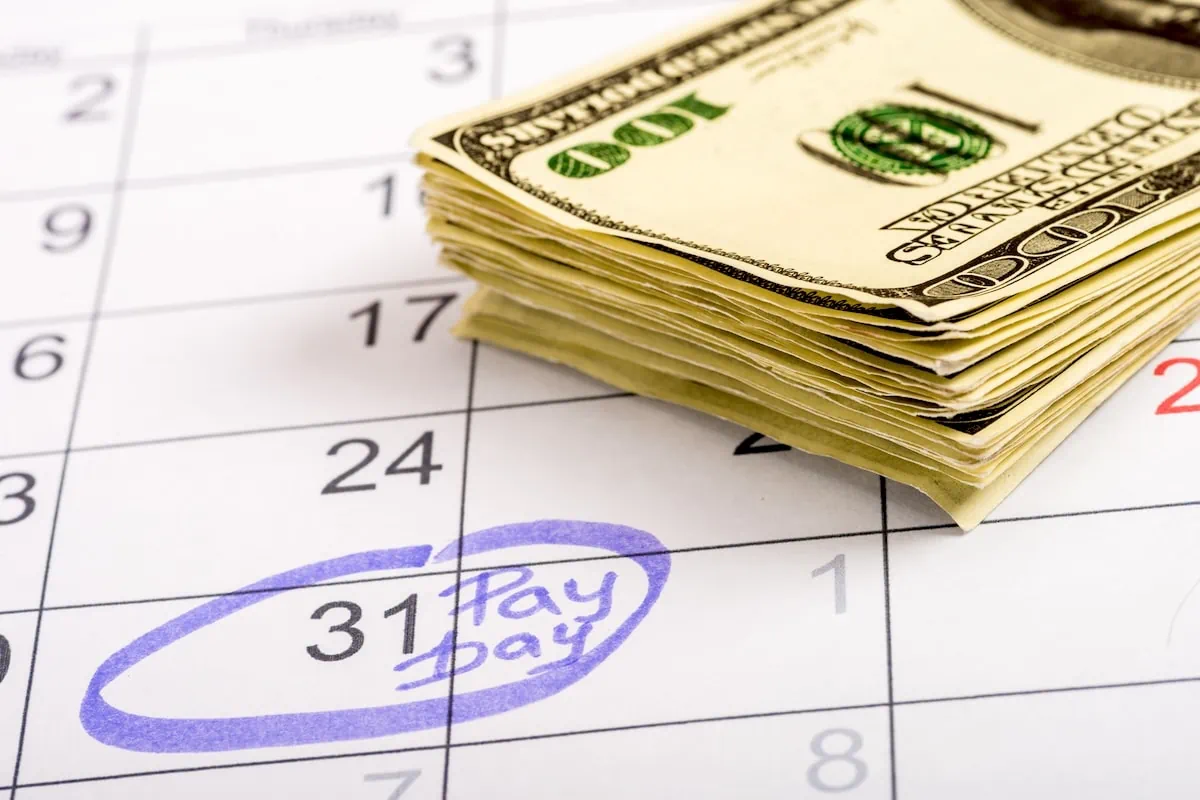
The vast majority of American dividend stocks pay regular, reliable payouts—and they do so at a more frequent clip (quarterly) than dividend stocks in most other countries (typically every six months or year).
Still, if you’ve ever thought to yourself, “it’d sure be nice to collect these dividends more often,” you don’t have to look far. While they’re not terribly common, American exchanges boast dozens of monthly dividend stocks.
Please Don’t Forget to Like, Follow and Comment

Did you find this article helpful? We’d love to hear your thoughts! Leave a comment with the box on the left-hand side of the screen and share your thoughts.
Also, do you want to stay up-to-date on our latest content?
1. Follow us by clicking the [+ Follow] button above,
2. Subscribe to The Weekend Tea, our weekly newsletter to read more about investing, spending, taxes, and more, and
3. Give the article a Thumbs Up on the top-left side of the screen.
4. And lastly, if you think this information would benefit your friends and family, don’t hesitate to share it with them!






